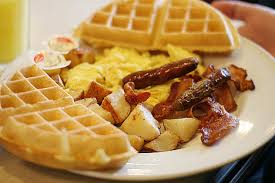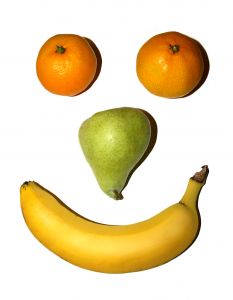February 12th, 2011 by Jennifer Wider, M.D. in Better Health Network, Health Tips
No Comments »

 Obesity levels are at an all-time high among men, women, and children in the United States. The need for good nutrition and regular exercise is paramount for maintaining proper health and for keeping those extra pounds at bay, especially for women.
Obesity levels are at an all-time high among men, women, and children in the United States. The need for good nutrition and regular exercise is paramount for maintaining proper health and for keeping those extra pounds at bay, especially for women.
Beginning in her late 20s and 30s, a woman’s average body weight climbs steadily each year. This increase usually continues into her 60s. For many women, the weight gain is between one to two pounds per year with some women gaining more, and others less.
Aside from weight loss, women who incorporate regular exercise into their daily schedules may lower the risks of certain diseases and conditions. A recent study presented at the Ninth Annual AACR Frontiers in Cancer Prevention Research Conference revealed that women who exercised for at least 150 minutes a week significantly reduced their risk of endometrial cancer, regardless of their body size.
The Journal of the American Medical Association (JAMA) revealed that in order to prevent weight gain, an average woman who eats a normal diet needs 60 minutes of moderate exercise per day. If a woman is overweight or obese, 60 minutes of exercise is inadequate to keep off the weight, according to the study. In many cases she will have to modify her diet, including cutting down on overall daily caloric intake.
For older women, a dose of regular moderate exercise may slow the progression of age-related memory loss. A study published in the Proceedings of the National Academy of Sciences revealed that exercise may even reverse changes in the brain due to the aging process. Other recent studies prove a positive correlation between exercise and a lower risk of colon cancer. Read more »
*This blog post was originally published at Society for Women's Health Research (SWHR)*
February 4th, 2011 by AnnMacDonald in Better Health Network, Health Tips
No Comments »

When I was growing up, my parents had a simple rule when it came to food: “Finish everything on your plate.” We had to sit at the table until we did.
They meant well. They wanted us to understand that food should not go to waste. The problem with this advice — and I’m sure I’m not the only American who grew up with it — is that we learned early on to eat everything put in front of us when we sat down to meals. Then the size of the plates grew — and so did the amount of food we consumed.
 It’s called portion inflation. Take a look at the illustration at left. It’s based on an analysis published in the Journal of the American Dietetic Association which found that typical restaurant portion sizes today are two to eight times as large as those in 1955. Back then, people who consumed a typical American meal (a hamburger, French fries, and a soda) had only one portion size to pick from. Today we can choose from multiple portion sizes: reasonable, big, bigger, and ridiculous (as I’ve come to think of the sizes listed in that last column).
It’s called portion inflation. Take a look at the illustration at left. It’s based on an analysis published in the Journal of the American Dietetic Association which found that typical restaurant portion sizes today are two to eight times as large as those in 1955. Back then, people who consumed a typical American meal (a hamburger, French fries, and a soda) had only one portion size to pick from. Today we can choose from multiple portion sizes: reasonable, big, bigger, and ridiculous (as I’ve come to think of the sizes listed in that last column).
Portion size matters. The bigger the portion, the more calories you can consume. An example using a table of calorie information available online in the nutrition section at McDonald’s: By choosing the largest size in each category, you’ll end up consuming nearly triple the number of calories in a meal as you would if you chose the smallest portions.
| Food |
Smallest size/calories |
Largest size/calories |
| Hamburger |
3.5 oz/250 calories |
11.1 oz/750 calories |
| French fries |
2.5 oz/230 calories |
5.4 oz/500 calories |
| Coca Cola |
12 oz/110 calories |
32 oz/310 calories |
| Total calories |
590 calories |
1,560 calories |
Partly as a result of portion inflation, we’re eating more. Dietary surveys indicate that, on a per capita basis, Americans consumed 200 calories more per day in the 1990s than they did in the 1970s. That may not sound like a lot, but over time extra calories translate into extra pounds. Some experts calculate that people who add 150 calories a day to their diets, without increasing physical activity to burn those calories off, will gain as many as 15 pounds in a year. Read more »
*This blog post was originally published at Harvard Health Blog*
January 22nd, 2011 by Toni Brayer, M.D. in Health Tips, Research
2 Comments »

 Haven’t we all learned that breakfast should be our biggest meal? “Start the day with ‘fuel’ and you can burn it off as the day goes on.” “Eat a big breakfast and you’ll eat fewer calories all day long.”
Haven’t we all learned that breakfast should be our biggest meal? “Start the day with ‘fuel’ and you can burn it off as the day goes on.” “Eat a big breakfast and you’ll eat fewer calories all day long.”
This advice is probably not true, and in fact a new study published in the January 17th issue Nutrition Journal shows that people ate the same at lunch and dinner regardless of what they had at breakfast. If a person ate 1,000 calories at breakfast (which is easy to do with bacon, eggs, toast, hashbrowns, and juice), he or she had a total increase in calories eaten throughout the day by 1,000 calories.
This doesn’t mean we should be skipping breakfast. The problem may be what we historically think of as an “American” breakfast. It might have worked for the farmer in the past or the laborer hauling lumber, but it’s just too many calories for our current level of activity. Read more »
*This blog post was originally published at EverythingHealth*
January 11th, 2011 by Toni Brayer, M.D. in Better Health Network, Health Tips
No Comments »

 As part of the new healthcare legislation (Affordable Care Act), the FDA has now published its guidelines for restaurants to inform consumers of the calorie counts of food. It establishes requirements for nutrition labeling of standard menu items for chain restaurants and chain vending machine operators.
As part of the new healthcare legislation (Affordable Care Act), the FDA has now published its guidelines for restaurants to inform consumers of the calorie counts of food. It establishes requirements for nutrition labeling of standard menu items for chain restaurants and chain vending machine operators.
This is important because Americans now consume an estimated one-third of their total calories from foods prepared outside the home. Consumers are generally unaware of the number of calories they consume from these foods, and being overweight or obese increases the risk of a number of diseases including heart disease, type 2 diabetes, stroke, and cancer.
Here’s what the guidelines say:
— Restaurants with 20 or more locations must disclose the number of calories in each standard menu item on menus and menu boards (have 19 chain locations? You get a pass. Daily specials also get a pass.)
— Additional written nutrition information must be available to consumers upon request (total fat, saturated fat, cholesterol, sodium sugars, carbs, fiber, protein, etc.)
— The menu must say that the additional nutritional information is available. Read more »
*This blog post was originally published at EverythingHealth*
January 5th, 2011 by DrCharles in Better Health Network, Health Tips, Opinion, Research
2 Comments »

 A patient reading a copy of Prevention in the waiting room brought to my attention an interesting article entitled “7 Foods That Should Never Cross Your Plate.” I would have to agree that these seven commonly eaten foods should be avoided, so I’ll rehash them here, along with three more of my own choosing to flesh out a New Year’s 7 + 3 = Top 10 list.
A patient reading a copy of Prevention in the waiting room brought to my attention an interesting article entitled “7 Foods That Should Never Cross Your Plate.” I would have to agree that these seven commonly eaten foods should be avoided, so I’ll rehash them here, along with three more of my own choosing to flesh out a New Year’s 7 + 3 = Top 10 list.
The lead into the article implores the reader to recognize that “clean eating means choosing fruits, vegetables, and meats that are raised, grown, and sold with minimal processing.” Michael Pollan, the regarded author of The Omnivores Dilemma and In Defense of Food, puts it even more simply: “Eat food. Not too much. Mostly plants.”
So here are the food items to avoid, in no particular order:
1) Canned Tomatoes – The resin that lines the corners of tin cans usually contains bisphenol-A, a compound found to produce estrogenic effects in the body, linked to heart disease, diabetes, obesity, and possibly neuro-developmental problems like ADHD. Tomatoes get picked on because their acidity increases the leaching of BPA into the food. Perhaps citrus foods and other acidic canned goods would have the same concerns.
2) Corn-Fed Beef – If you’ve ever watched the documentary Food Inc., you’ve probably been disgusted and appalled by the supply chain that brings meat to our tables and fast food restaurants. Bloated cows are being fed corn and soybeans, heavily subsidized crops controlled by Monsanto, to the detriment of their health. Eating their meat passes on the lower nutritional value to us, and perpetuates an immoral system of CAFO’s and cow concentration camps. Grass-fed beef, especially free range, is higher in vitamins, minerals, and has a healthier fat profile (better omega-3 to omega-6 fatty acid ratios). Bison tends to be grass fed, free-range, and of a superior nutritional quality. Eat Wild can help you find local farms that raise animals properly and often need your support. Think of the higher cost returning dividends on your health and as a charitable support of a good cause. Read more »
*This blog post was originally published at The Examining Room of Dr. Charles*
Obesity levels are at an all-time high among men, women, and children in the United States. The need for good nutrition and regular exercise is paramount for maintaining proper health and for keeping those extra pounds at bay, especially for women.






 As part of the new healthcare legislation (Affordable Care Act), the FDA has now published its
As part of the new healthcare legislation (Affordable Care Act), the FDA has now published its 











